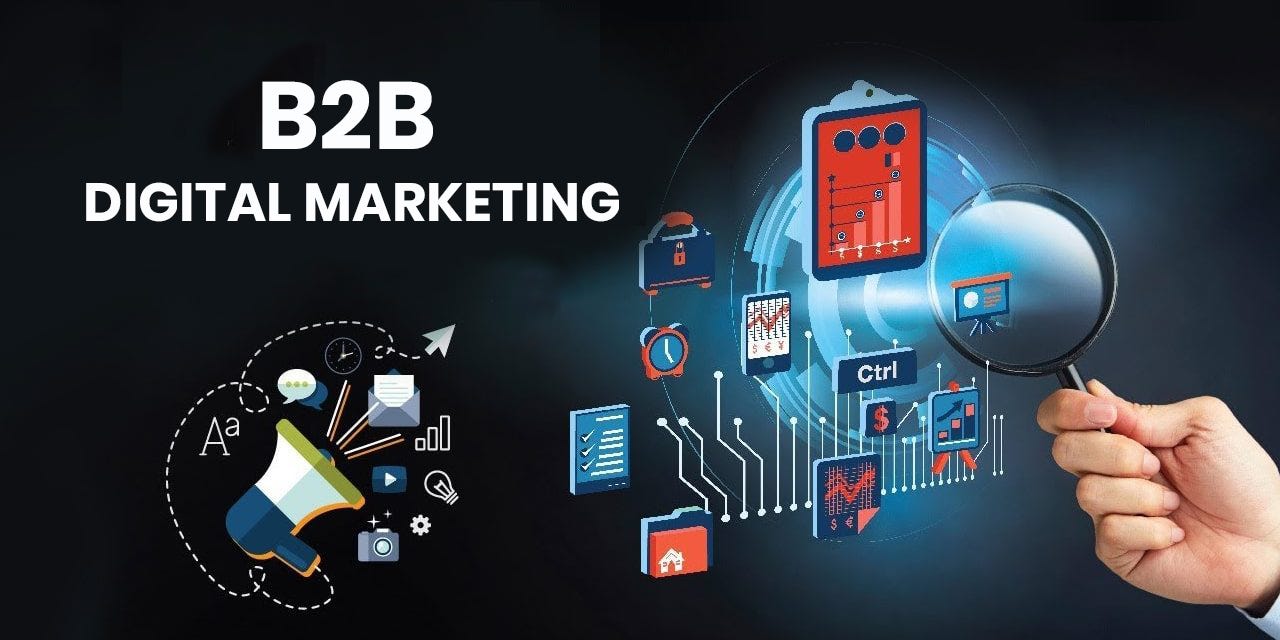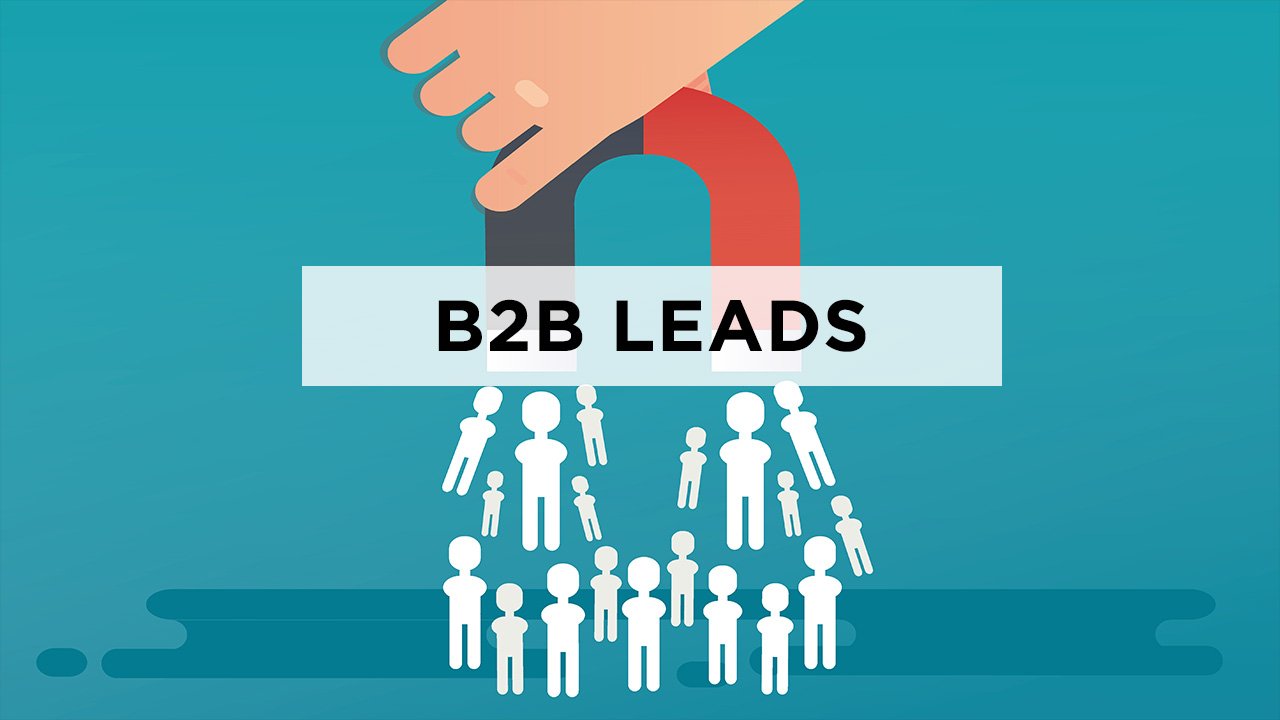A particular kind of marketing called business-to-business (B2B) marketing focuses on transferring products or services from one company to another. B2B marketing has changed significantly in the current digital era, The 15 Most Important Elements of a B2B Marketing Strategy. Companies hoping to succeed in the B2B market must comprehend these components.
However, sometimes in order for the product to reach the consumer in its final form, the company must rely on raw materials and semi-finished goods to produce it. These raw materials may be sourced or produced by a small or medium-sized company that sells only primary products to other companies.
Understanding Target Audience in B2B Marketing
When it comes to B2B marketing, knowing your target demographic is essential for businesses looking to succeed in a competitive marketplace. B2B campaigns, in contrast to B2C marketing, require a better understanding of the unique requirements, pain regions, and goals of other firms. To figure out the target audience’s demographics, industry verticals, decision-making processes, and buying patterns, in-depth investigation and analysis are required.
Developing customized messages, offering worthwhile solutions, and forging deep relationships that speak to the particular difficulties that the target market’s businesses experience are all essential to successful B2B marketing. Businesses can strategically position themselves to give pertinent content and solutions, build enduring relationships, and achieve successful business outcomes by focusing on the details of their target audience.

Key Elements of B2B Marketing
There is a huge market for business-to-business business precisely because all products that reach the consumer must contain several ingredients or raw materials that are assembled or combined to form the final product to be offered to the consumer.
There are some basic components of Business-to-Consumer (B2C) that can be applied to business-to-business (B2B) as well – there should be a need for the product, creating awareness, promoting the sale, and actual sales of the product.
Let’s take the example of a car manufacturer. It is possible that the raw materials for the car come from a different set of suppliers. They can even import the engine, wheels, speedometer, upholstery, mirrors etc.
Likewise, a laptop manufacturer may have sources and suppliers responsible for sourcing the casing, screen, motherboards, wiring, keyboards, and integrated circuits (IC).
None of our business purchases are made for lack of manufacturing capacity. But in order to make a valuable product and sell it for profit. Hence there is a huge difference in the mindset of the average consumer and the business buyer.
The 15 Most Important Elements of a B2B Marketing Strategy
There are 15 important elements for the success of a corporate marketing strategy. We will mention all of these factors, taking at least one example to illustrate the factors that help the success of the strategy.
1. Buying a business is a complex process
Buying a business is a complex process that may include multiple decision-making hierarchies and ultimate approval from the finance department, or perhaps the board of directors, depending on the size of the purchase.
Furthermore, decision makers are always evolving, which poses a significant challenge for business-to-business (B2B) marketers. Some businesses might opt for a cheaper pricing since they want to offer their products for as little money as possible.
Business purchases are classified into business as follows:
- Low-risk, low-value purchases. It involves decision making at lower levels.
- Low-risk, high-value purchases. Requires approval at technical and financial levels.
- High risk, low value purchases. Which includes specialists and procurement.
- High value, high risk purchases. In which the company’s senior decision makers participate.
Because many of the company’s decision makers are involved in critical product purchases. A B2B seller must demonstrate a high level of expertise in all of their interactions with their target audience.
2- Utilizing Social Media in B2B Marketing
LinkedIn is a powerful tool for business-to-business (B2B) interactions, providing opportunities for networking and targeted advertising. Though they use different strategies, other platforms like Facebook and Twitter also have a position in the B2B market.

3. Corporate Marketing | Purchasing is rational
As opposed to the typical retail customer, who might base their choice based on a variety of considerations such as price, purchase and payment history, ostentatious expenditure, etc.
Managers of the corporation always make purchases after carefully weighing the costs and advantages to the organization. It is challenging for the customer to find out all the details regarding the goods or services that the business acquires.
As credit cards became more popular and consumer disposable income increased, spending habits changed. They can now buy on credit, or pay in monthly installments.
The task of B2B marketers becomes difficult because purchasing depends on critical analysis of pros and cons. However, purchasing can also be based on the supplier’s reputation and past track record.
No B2B buyer will risk their stake in an unknown product, even if the cost factors are optimal for the company.
4. Corporate Marketing | Product complexity
Consumer products are purchased on the basis of brand building and awareness created by the company. Consumers may not be bothered by the finer technical details of the product. But the company needs to evaluate it in detail and find out whether customization is required or changes in product specifications are required.
A business-to-business (B2B) marketer must be armed with all the technical information and standardization protocols to reach the company’s top decision-makers. The information provided should be factual and not based on the value created in the buyer’s mind.
On the other hand, much of the investment required to build the brand and create value in the mind of the customer can be eliminated in the selling process based on “technical” criteria.
5. Content Strategy in B2B Marketing
Content lies at the heart of B2B marketing. Offering valuable content that addresses the audience’s challenges and interests is pivotal. Diversifying content formats such as blogs, case studies, whitepapers, and videos enhances engagement and value.
6. Fewer buyers and more sellers
Unlike the consumer market where there are thousands and millions of buyers. The business-to-business (B2B) market is more limited to a limited number of perhaps large, medium-sized buyers who have the option of choosing from among many suppliers.
The business-to-business (B2B) market operates according to the Pareto principle 80:20, where 80% of suppliers compete for 20% of buyers in the market.
However, few major buyers may purchase in bulk compared to the average consumer in the market whose spending will be limited to a few thousand dollars for that product category.
The limited number of buyers represents a challenge and opportunity for sellers as the process involves presentations, creating awareness, working closely with the customer to make modifications to the product if necessary, making the sale and then providing after-sales service.
The supplier is not evaluated based on the product’s merits alone. But based on technical consulting, product efficiency, value creation and on-site support services.
7. Fewer fragmentation and requirements
In the consumer market, a particular product can be divided into different segments based on need, purchasing power, and features. There may be a range of brands from an existing company in the premium segment – Timex watches, Unilever consumer products .
However, the industrial buyer is not looking for products for final consumption and therefore does not bother to look at them from a consumer perspective.
Market fragmentation is much lower because whims, insecurity and indulgence are not factors that drive buying.
Many people are involved in business-to-business (B2B) decision making and the segments are based on price, quality, service and partnership.
The challenge for the B2B marketer is to focus on the right segment and work with them to develop a long-term strategic partnership although limited segmentation helps to some extent when compared to consumer markets.
The best strategy is to classify the target audience by size, segment it by geographical area, and provide all the assistance required to the customer.
In business-to-business (B2B) purchasing, the target audience is often referred to as customers because the product does not fulfill a need but is a type of support for their final product.

8. Lead Generation Techniques in B2B
Effective lead generation involves offering valuable incentives or lead magnets, alongside leveraging webinars and events to attract potential clients and nurture relationships.
9. Business Marketing | Building personal relationships
In consumer selling, companies rely on the media to market their products – including newspapers, television, radio, the Internet and on a physical level – signs, hoardings, etc.
Here, many of the consumers who purchase the products are unknown to the company as the products are sold through wholesale and retail channels.
Except in the case of certain products such as vacuum cleaners, mobile phones, water purifiers and books sold online or directly at customers’ premises.
Here, brand building is more important and provides incentives to distribution partners which include distributors, corporate agents, wholesalers and retailers who in turn will push the product.
However, in B2B marketing, it is very important to build a personal relationship with key decision makers in the target company.
Marketing team members are often brand ambassadors. Therefore, the first impression of the company is formed during the first visits of salespeople to promote the account.
In B2B, a premium is spent on obtaining, training and retaining the right sales and marketing force.
Furthermore, frequent changes in the marketing team may affect relationship building with potential customers and may result in loss of business.
Apart from direct selling, key leads for business-to-business (B2B) sales are generated through participation in trade shows which is not required in consumer selling due to high media spend.
10. Customer Relationship Management (CRM)
CRM systems play a pivotal role in managing interactions with current and potential customers. Selecting the right CRM system ensures streamlined processes and improved customer experiences.
11. Corporate Marketing | Long term purchase
For the average consumer who buys fast-moving consumer goods (FMCG), the purchase can be for a lifetime of at least 5 to 10 years. As in the case of television, refrigerator, microwave oven, etc.
In the B2B industry, this can be a requirement for a component or combination on an ongoing basis until a particular brand or product is taken off the market.
Changes in design or product specifications may render a particular device, component or kit useless or obsolete.
In B2B, since customers are fewer and the business is longer-term, the sales team needs to build long-term relationships.
The company must adequately train the sales team on the latest technologies and ensure that they succeed in delivering them to customers.
12. B2B Marketing | Focus on innovation
Products thrive on the innovative spirit of the companies that develop them. They, in turn, must rely on other suppliers to adjust devices and components.
As innovations are planned and successfully marketed in the B2B market, sellers need to work in tandem to capitalize on new market opportunities.
B2B marketers need to conduct detailed market research, combining it with primary information to build a complete picture of market information.
Business-to-consumer (B2C) businesses are likely to be less risk averse because they need to anticipate the whims and irrational behavior of consumers rather than make calculated corporate decisions.
13. Email Marketing and Automation
Crafting compelling email campaigns tailored to B2B audiences remains a potent tool. Implementing automation tools streamlines the process, allowing for personalized and timely communications.
14. Corporate Marketing | Appearance and packaging
Consumer goods depend on good packaging and branding for their success. Huge amounts of money may be spent on attractive cardboard and logo design.
In Business-to-business (B2B), marketing packaging is of less importance because purchasing is not based on appearance and design. A product is judged primarily on its intrinsic merits and not on its attractive appearance.
Moreover, decision makers may not see mobilization at all. It can be opened and used on the production floor by production technicians and production staff.
15. Corporate Marketing | Trademarks
In B2C markets, the role of parent and sub-brands has already been highlighted, but B2B marketing does not depend on brands as 5% of the decision-making process is based only on brand influences.
Some B2B companies have created sub-brands for each aspect of their products in their desire to use branding strategies. However, the importance of building relationships over building a business-to-business (B2B) brand has already been emphasized.
Some business-to-business (B2B) marketers are increasingly relying on the web and social media to reach their potential market.
The main trend in digital marketing and web design is towards minimalistic web design and digital marketing.

